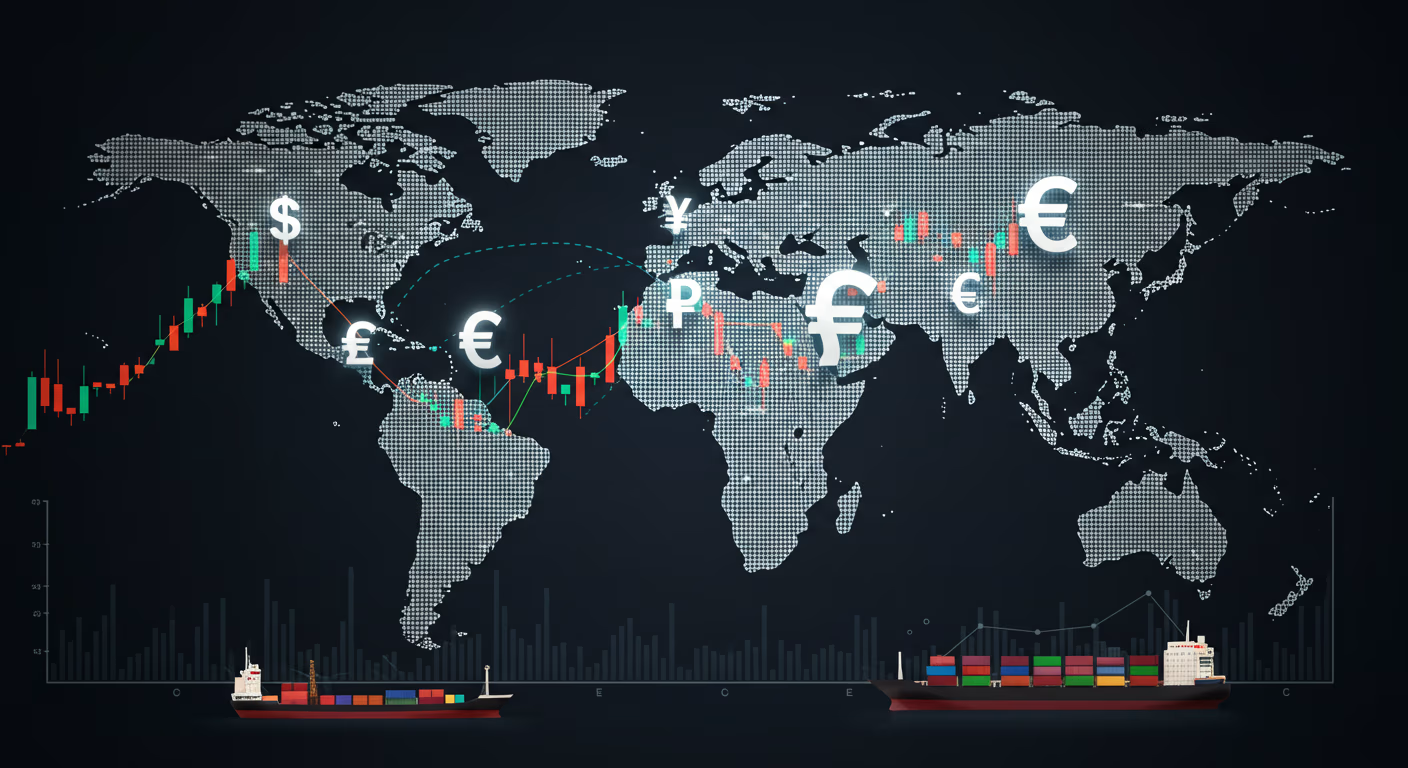In today’s highly interconnected global economy, businesses no longer operate within neatly defined borders. Whether it’s a U.S. tech firm outsourcing development to India, a German automaker importing parts from South Korea, or a Japanese electronics brand selling goods in Brazil, exchange rates play a central—yet often underestimated—role in global business success.
While most consumers think of exchange rates in terms of vacation expenses or travel costs, for multinational companies, currency fluctuations can make or break profit margins, disrupt supply chains, and alter competitive dynamics overnight. The impact is often invisible to the public but deeply felt in boardrooms, pricing strategies, and balance sheets around the world.
Why Exchange Rates Matter for Business
At its simplest, an exchange rate is the price of one currency in terms of another. But for businesses engaged in international trade, the implications go far beyond simple conversions.
Imagine a U.S.-based exporter who receives revenue in euros. If the dollar strengthens against the euro, that revenue becomes worth less when converted back to dollars, squeezing profit margins. On the other hand, a weaker dollar might boost earnings—without selling a single additional product.
This constant fluctuation introduces unpredictable risk. That risk—commonly referred to as foreign exchange (FX) risk or currency risk—can:
- Impact the cost of imported raw materials or finished goods
- Affect the competitiveness of export pricing
- Distort earnings and revenue projections
- Influence strategic decisions like market entry or supply chain shifts
Cost Volatility: A Moving Target for Importers and Exporters
Currency swings affect both sides of a transaction. For importers, a falling home currency means higher costs for goods purchased abroad. For exporters, a rising domestic currency makes their products more expensive for overseas buyers—reducing demand or forcing price adjustments.
Take a real-world example: A U.K.-based apparel company sources textiles from China and sells finished products in the U.S. and Europe. If the British pound weakens against the Chinese yuan, input costs rise. If the pound strengthens against the dollar or euro, the company’s products become pricier for foreign consumers, potentially cutting into sales.
In both cases, margins shrink and profitability suffers—often with little warning.
FX Risk in Supply Chains and Contracts
Currency risk isn’t limited to end sales—it’s embedded across the supply chain. Many manufacturers operate on long-term contracts, locking in purchase orders or pricing months in advance. If a company agrees to pay a supplier in a foreign currency and that currency appreciates unexpectedly, the cost rises—even if the original terms remain unchanged.
These fluctuations can be particularly damaging for industries with thin margins, such as retail, hospitality, or food production. Without adequate FX hedging strategies, even minor exchange rate movements can wipe out projected earnings.
Multinational Earnings and Translation Risk
For global corporations, exchange rates also impact how foreign revenue is reported in financial statements. This is known as translation risk.
Consider a U.S.-based tech firm earning significant revenue in Japan. If the Japanese yen depreciates against the U.S. dollar, the company will report lower earnings in dollars—even if its Japanese sales remained strong. This can influence stock prices, investor sentiment, and executive decision-making.
Many major firms, including Apple, Microsoft, Nestlé, and Toyota, regularly cite currency fluctuations in their quarterly earnings calls as a key variable in financial performance.
Investment and Expansion Strategies Affected by Currency Trends
Exchange rates can also shape where companies choose to invest or expand. A favorable currency trend may encourage a business to set up operations in a particular country, while unfavorable movements might lead to delays, downsizing, or even relocation.
For example:
- A U.S. firm may delay expanding into Argentina if the peso is highly unstable, fearing value loss.
- A European manufacturer may accelerate investment in Eastern Europe if local currencies weaken, making labor and materials cheaper.
- A Canadian mining company may rethink overseas ventures if its home currency gains too much strength, reducing potential foreign revenue.
In this way, currency dynamics don’t just impact transactions—they influence long-term global strategy.
The Hidden Impact on Consumers
While businesses feel the brunt of exchange rate movements, the effects often trickle down to everyday consumers. A sudden rise in import costs due to a weaker currency might result in higher prices at the supermarket, the gas pump, or the electronics store. Conversely, a strong domestic currency might temporarily lead to cheaper imported goods—but could also hurt domestic exporters and employment in trade-sensitive sectors.
These ripple effects make currency stability a national economic priority for governments and central banks. It’s also why major central banks frequently intervene, either directly or through policy shifts, to curb excessive volatility.
How Businesses Mitigate FX Risk
Savvy companies don’t leave currency risk to chance. Many deploy a range of hedging strategies to insulate themselves from exchange rate shocks:
- Forward contracts: Agreements to buy or sell currency at a fixed rate in the future, locking in costs or revenues.
- Currency options: Contracts giving the right (but not obligation) to exchange at a certain rate—helpful in highly volatile environments.
- Natural hedging: Matching revenue and expenses in the same currency—for instance, using euro-denominated suppliers to offset euro-based revenue.
- Diversification: Spreading operations across multiple regions to reduce dependency on any single currency pair.
These tools help stabilize forecasts, protect margins, and maintain pricing power in foreign markets.
What Companies—and Investors—Should Watch in 2025
In the current economic landscape, several currency-related factors are top of mind for global business leaders:
- Central bank divergence: The U.S. Fed, ECB, and BoJ are taking different policy paths, leading to volatile currency swings.
- Emerging market FX volatility: Currencies in Latin America, Africa, and Asia are reacting strongly to geopolitical risk and commodity price changes.
- De-dollarization and reserve diversification: Some countries are reducing reliance on the U.S. dollar, which could have long-term implications.
- Inflation-linked FX moves: Persistent inflation in various economies is affecting interest rates—and therefore exchange rate expectations.
- Supply chain reconfiguration: Companies are shifting production closer to home or to lower-risk regions, partially in response to FX uncertainty.
Exchange Rates Are More Than Numbers—They’re Business Drivers
Exchange rates may appear to be abstract numbers scrolling across financial screens, but for global businesses, they’re fundamental to profitability, strategy, and survival. A few percentage points in currency fluctuation can mean millions in unexpected gains—or losses.
As the world becomes more interconnected, companies must view FX not just as a financial consideration but as a strategic variable embedded in pricing, sourcing, expansion, and risk management.
In a global economy, currency moves silently behind the scenes—but its impact echoes loudly across industries, markets, and even our day-to-day lives.





